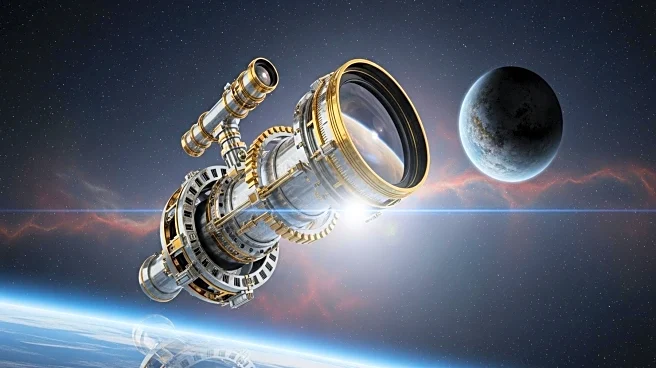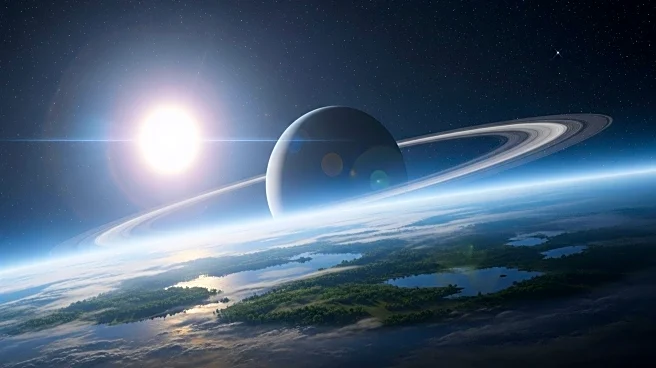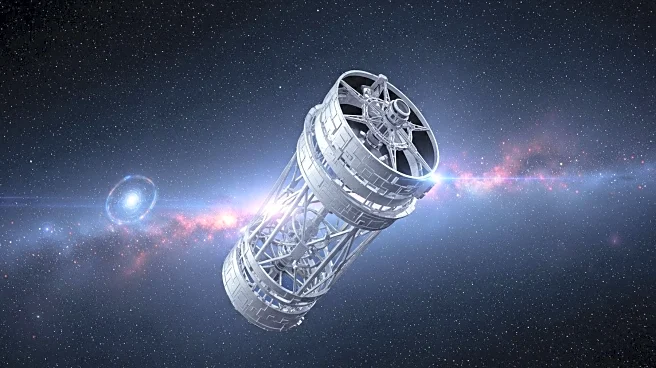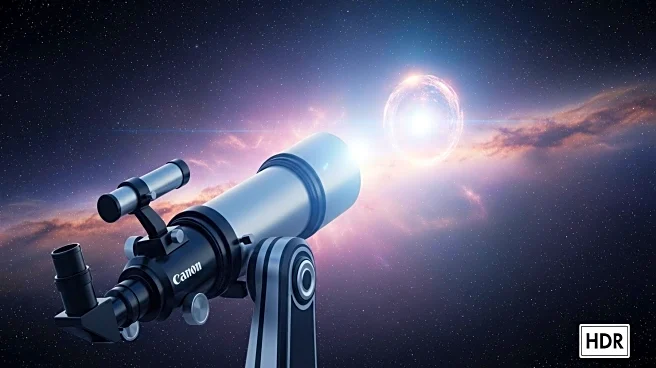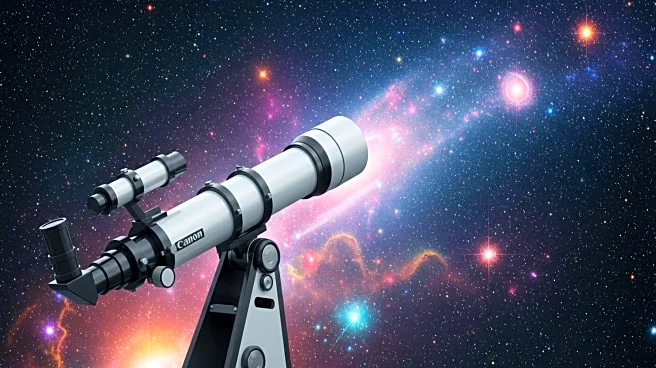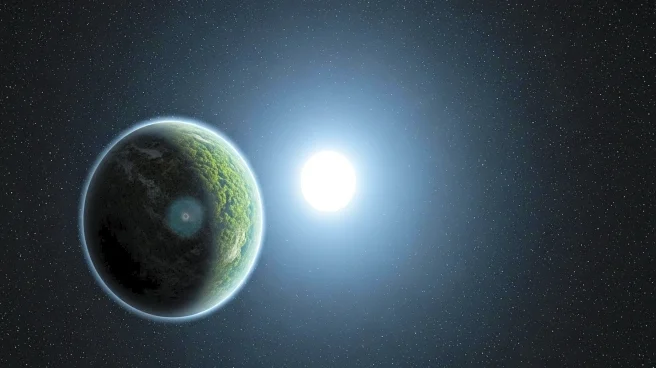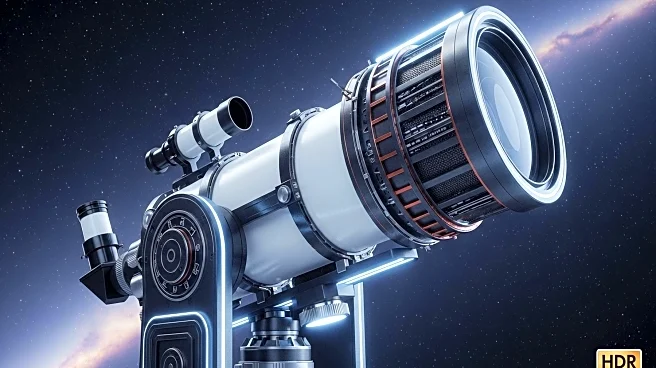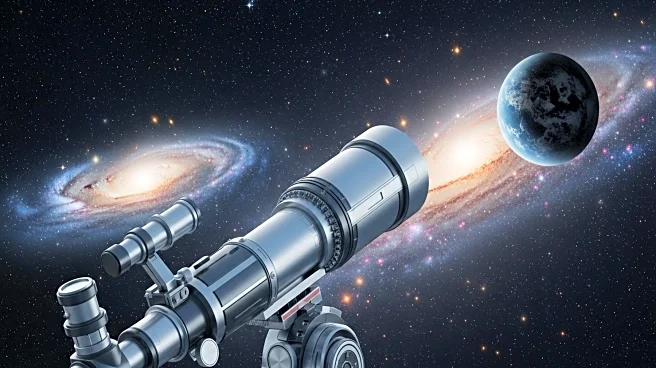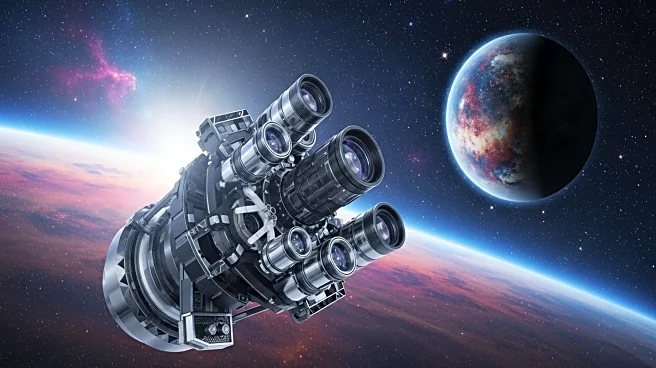What's Happening?
The James Webb Space Telescope (JWST) is conducting research on TRAPPIST-1e, an Earth-sized exoplanet located about 40 light-years away. Astronomers are using the telescope to study the planet's atmosphere and assess its potential habitability. TRAPPIST-1e is situated in the 'Goldilocks zone,' where conditions might allow for liquid water. However, the presence of an atmosphere is crucial for determining its ability to support life. The JWST's observations are complicated by interference from the planet's parent star, but researchers are working to refine their data.
Why It's Important?
The investigation of TRAPPIST-1e is significant as it represents a step forward in the search for extraterrestrial life. Understanding the atmospheric conditions of planets in habitable zones can provide insights into the potential for life beyond Earth. The JWST's capabilities allow for detailed analysis of exoplanet atmospheres, which is essential for identifying planets that might support life. This research contributes to the broader field of astronomy and the quest to understand our place in the universe.
What's Next?
Researchers plan to continue observing TRAPPIST-1e with the JWST, aiming to gather more data on its atmosphere. Future observations will help clarify whether the planet has a secondary atmosphere or is a bare rock. The ongoing study of TRAPPIST-1e will enhance our understanding of exoplanetary systems and their potential for habitability. As more data is collected, scientists hope to make definitive conclusions about the planet's ability to support life.
